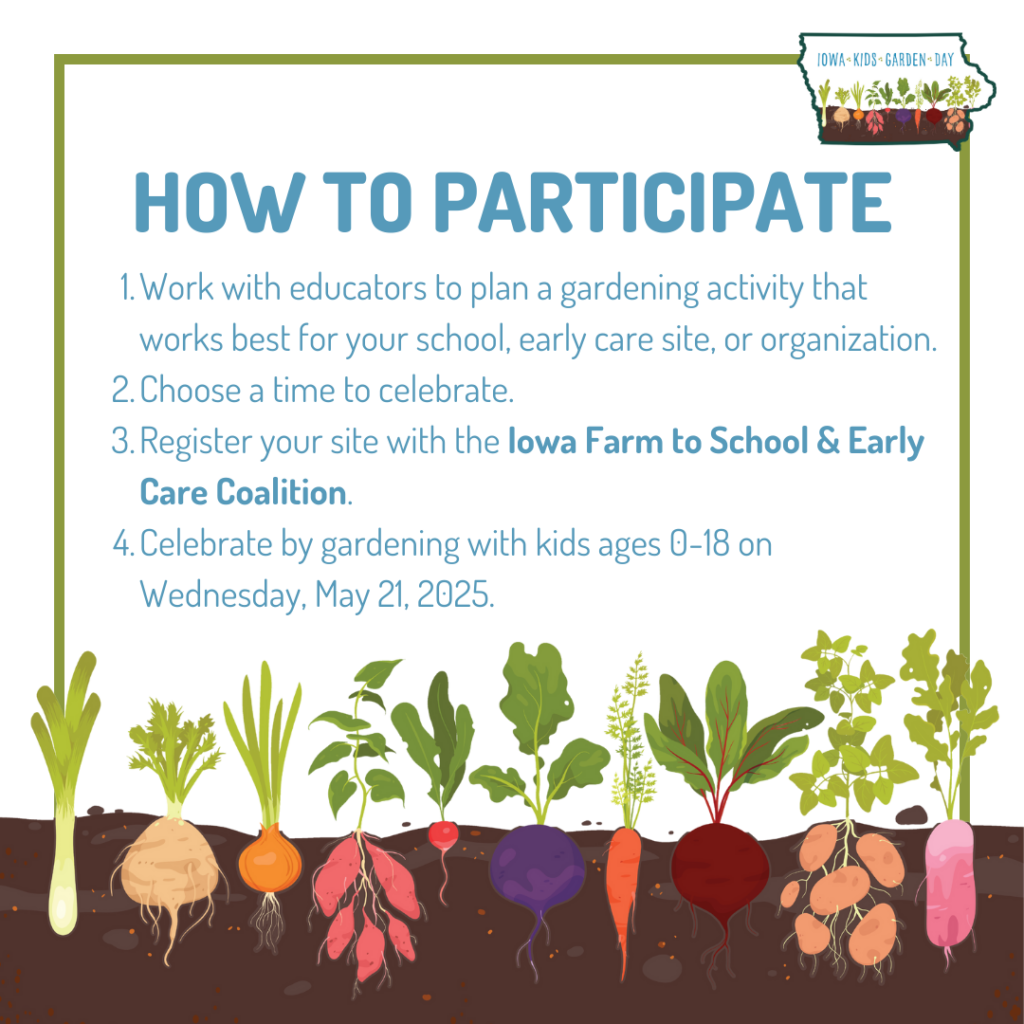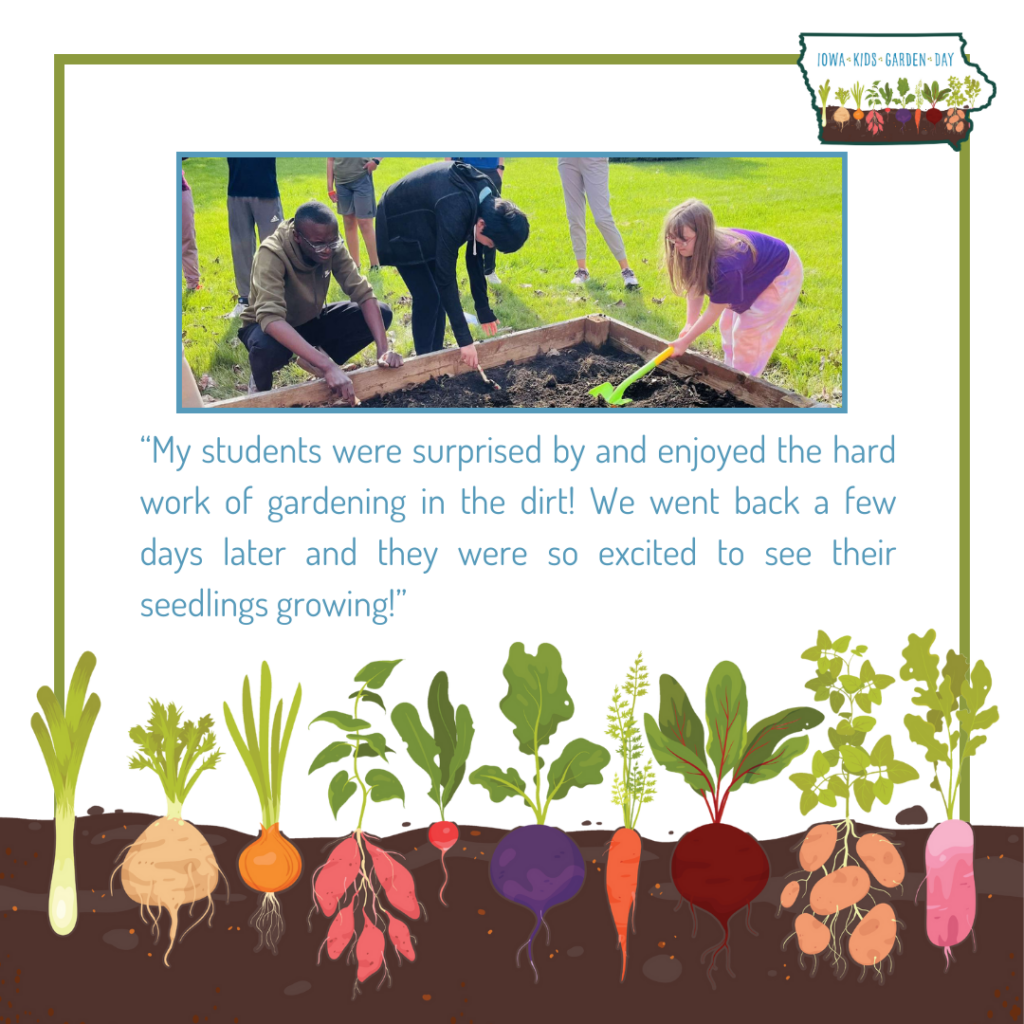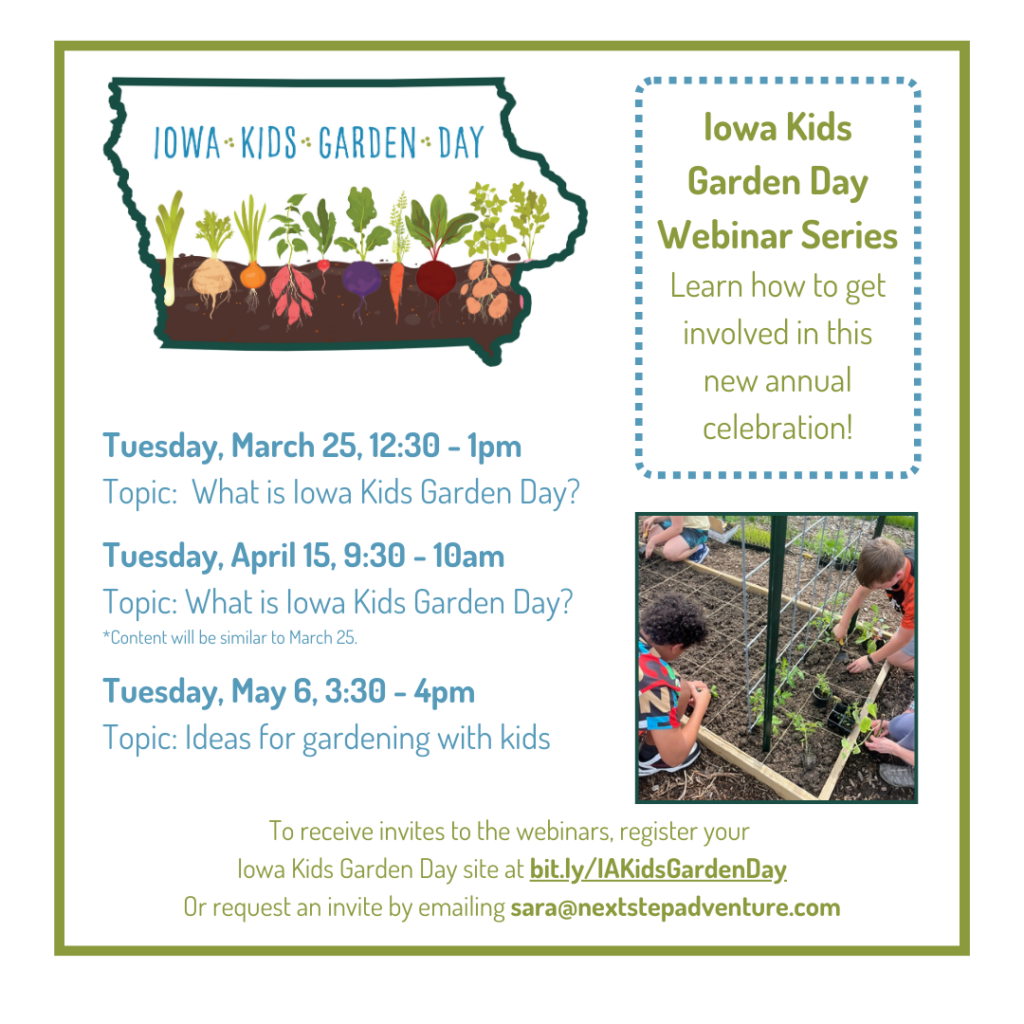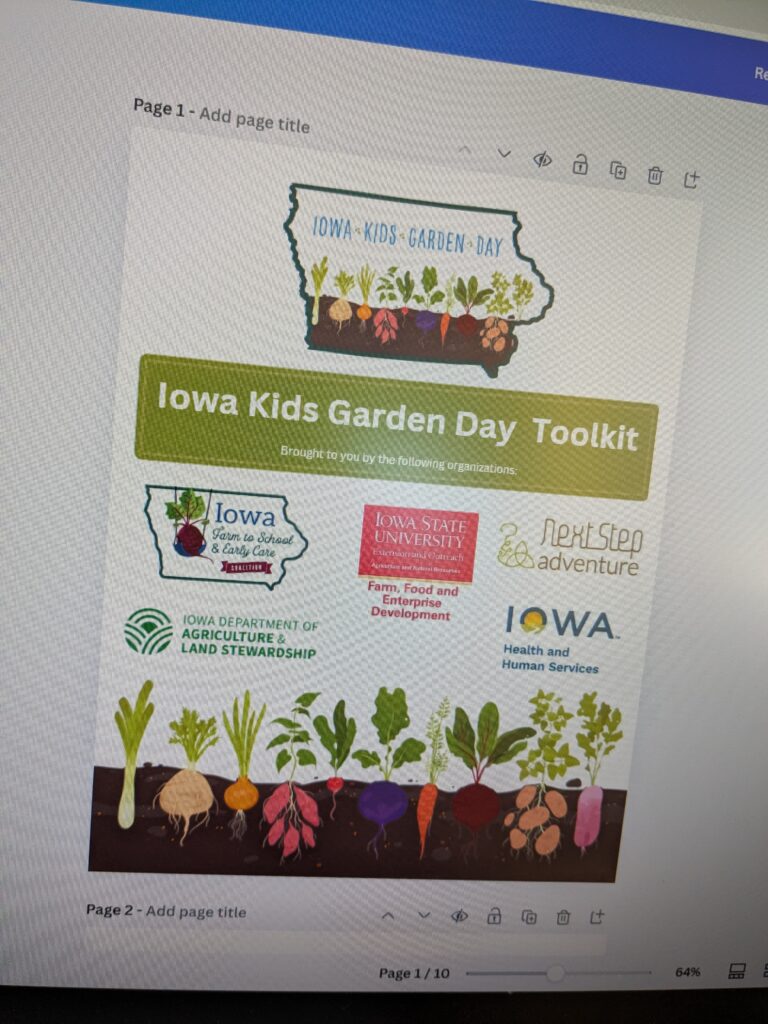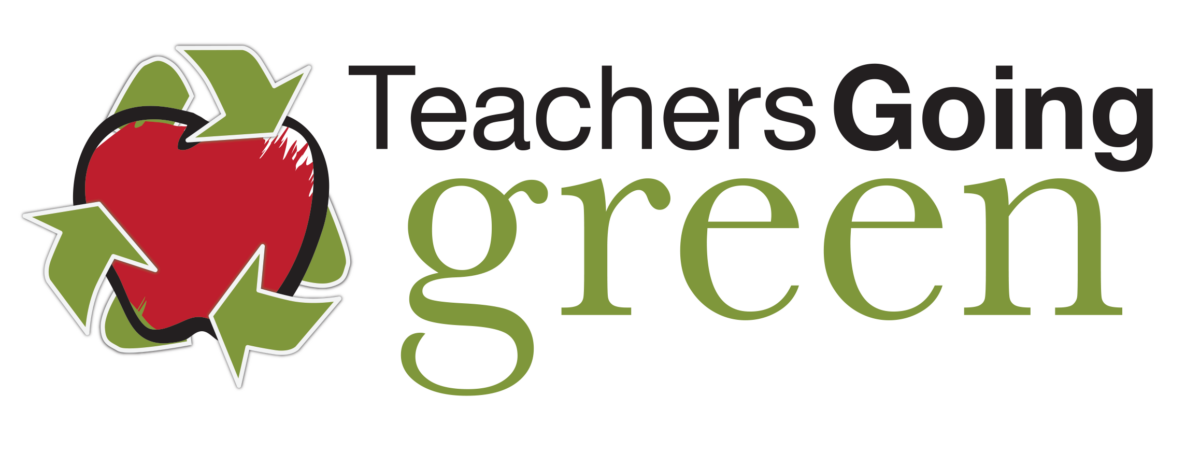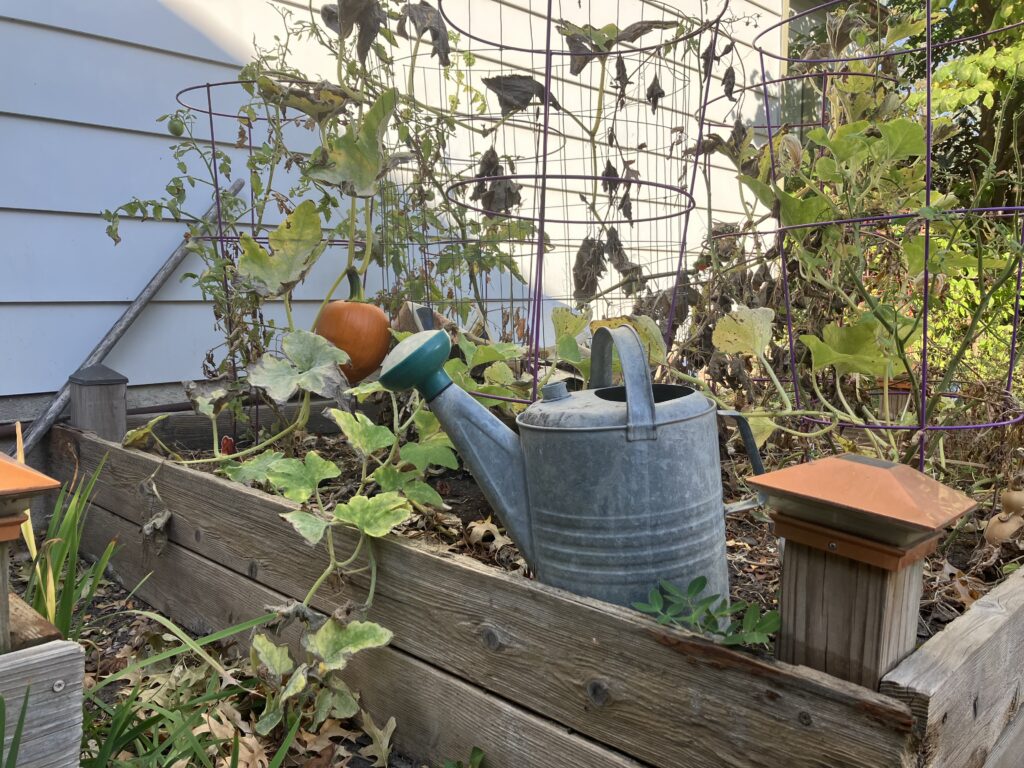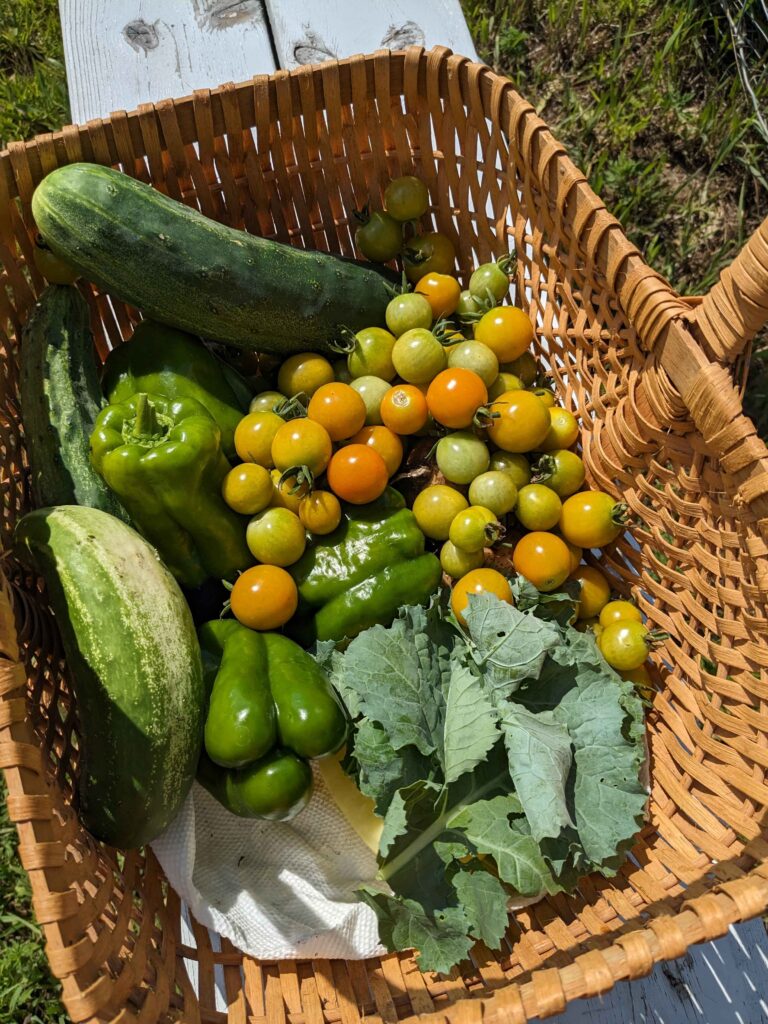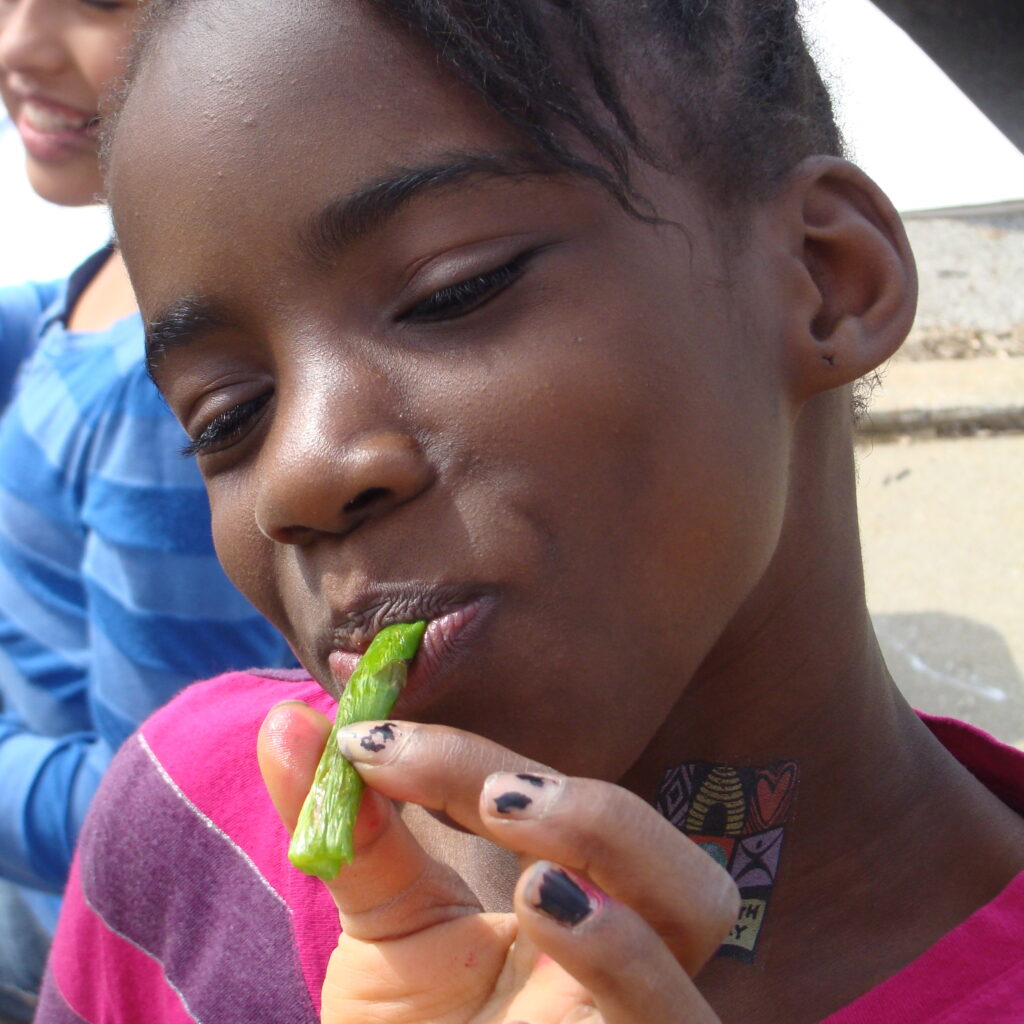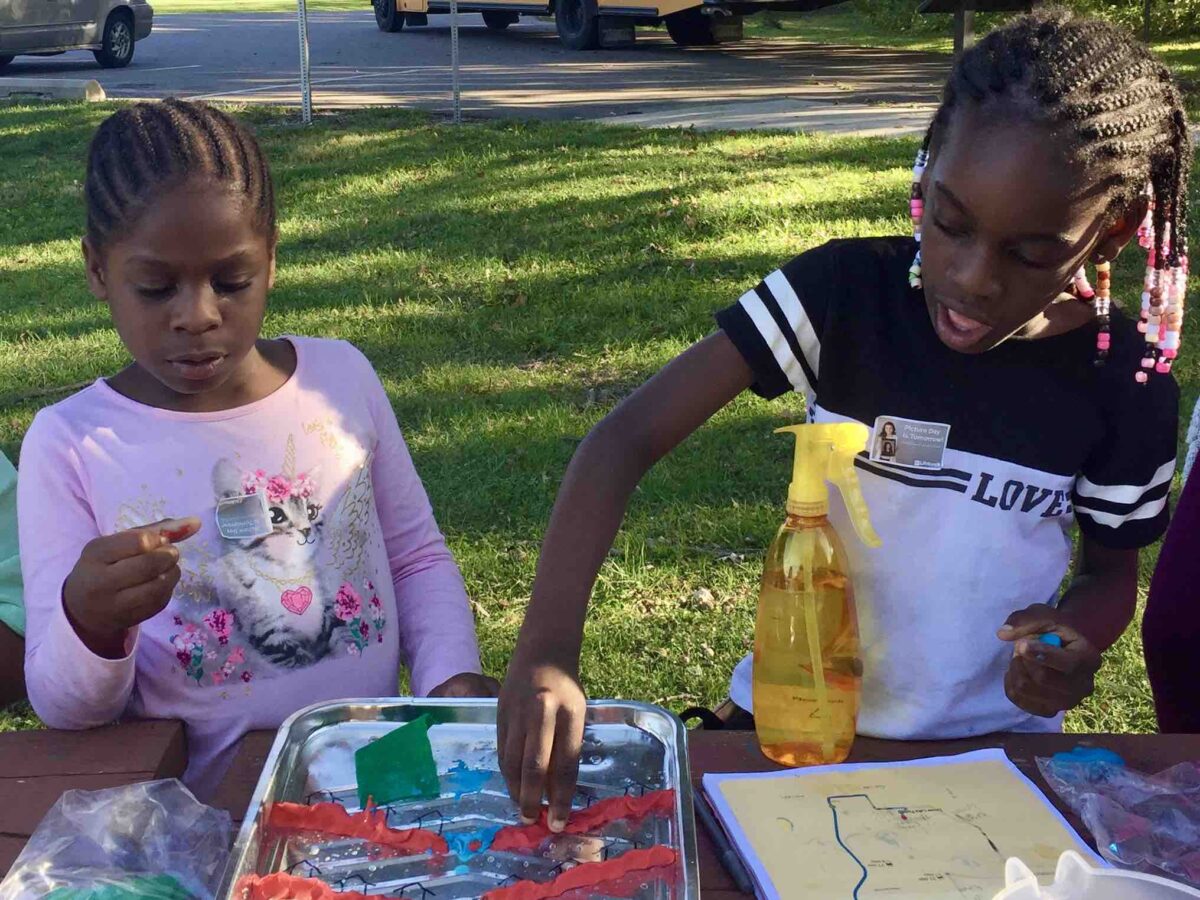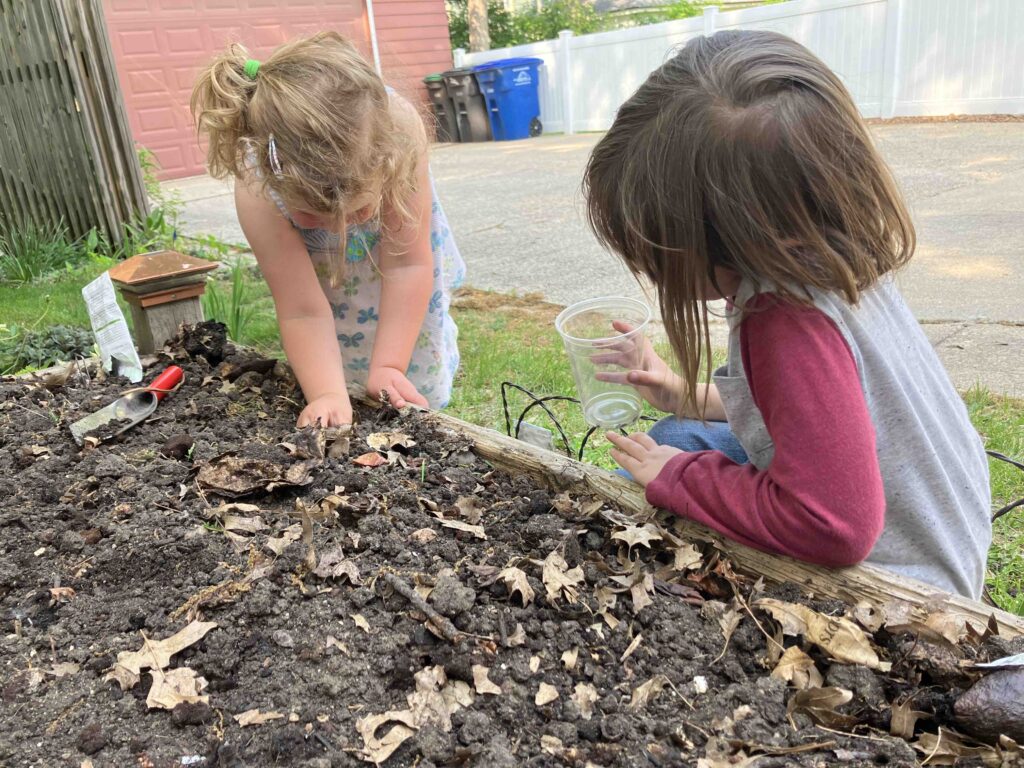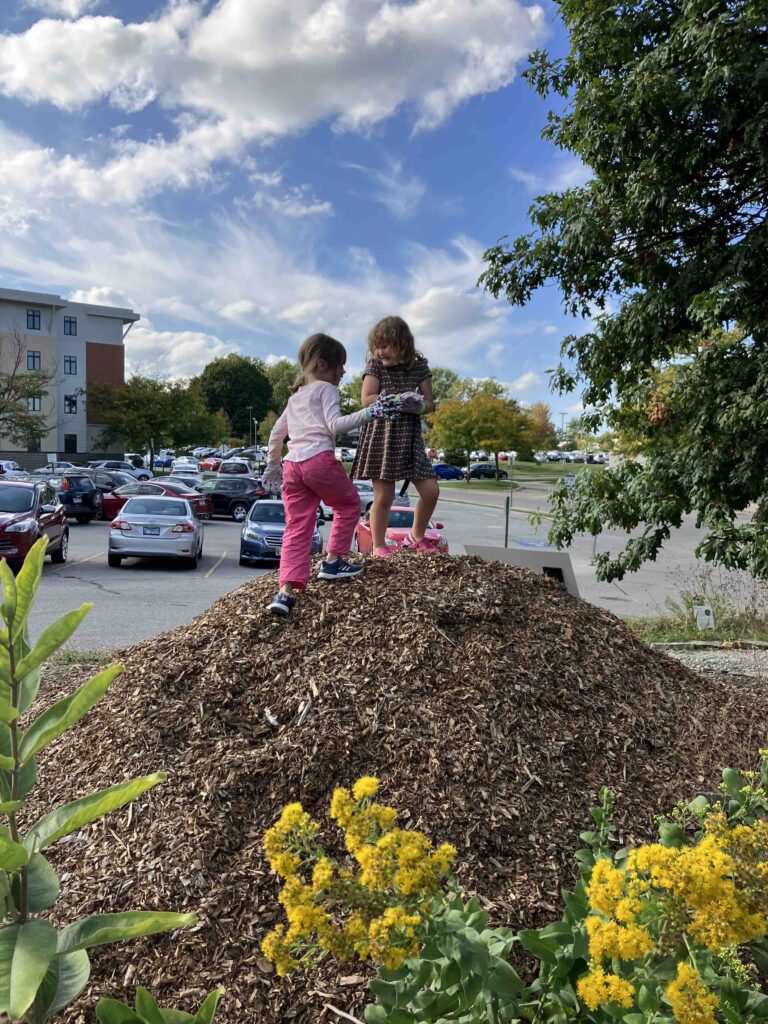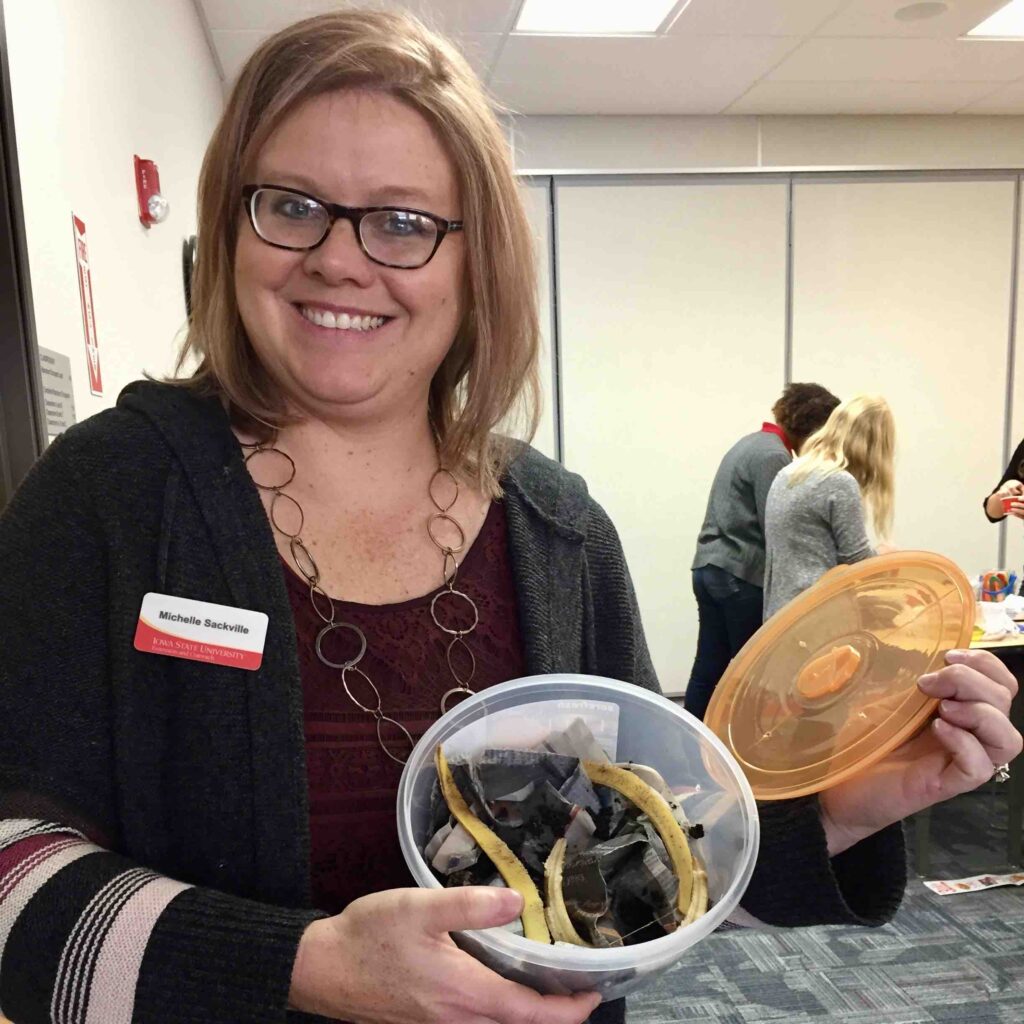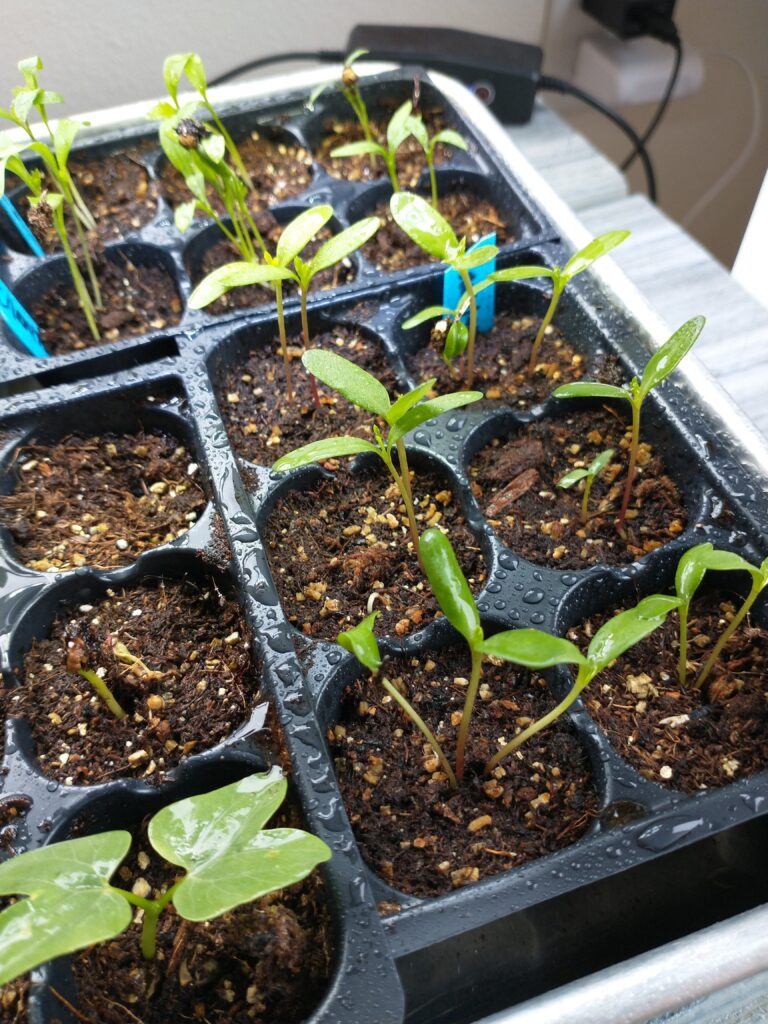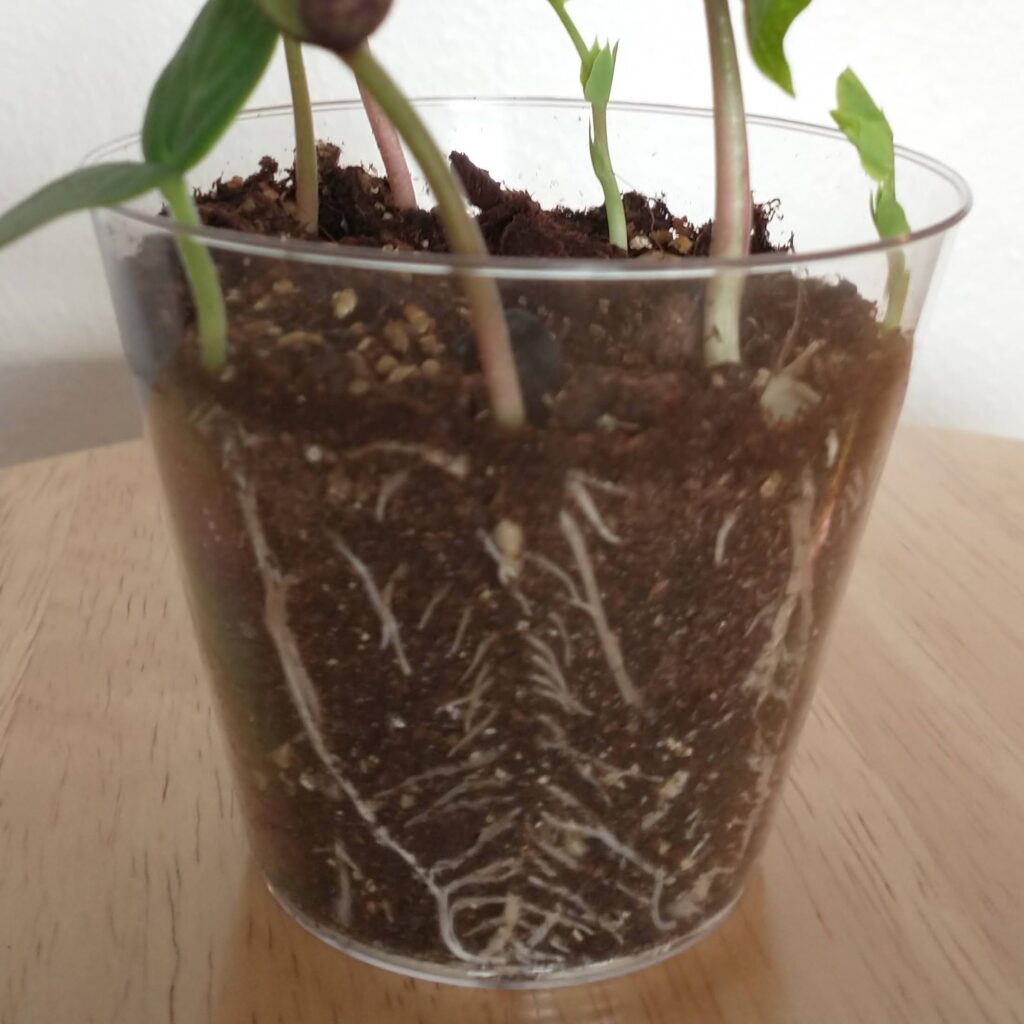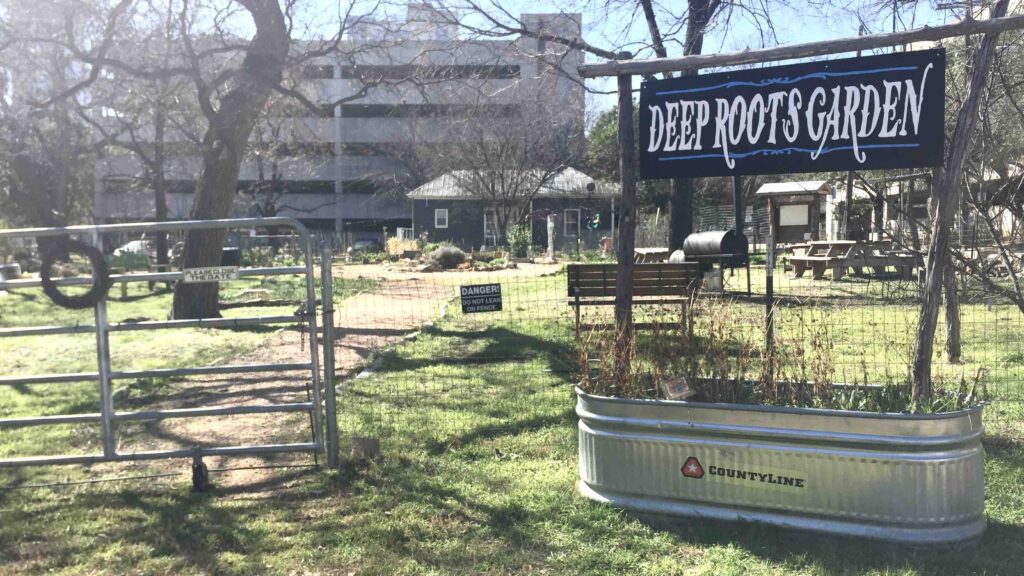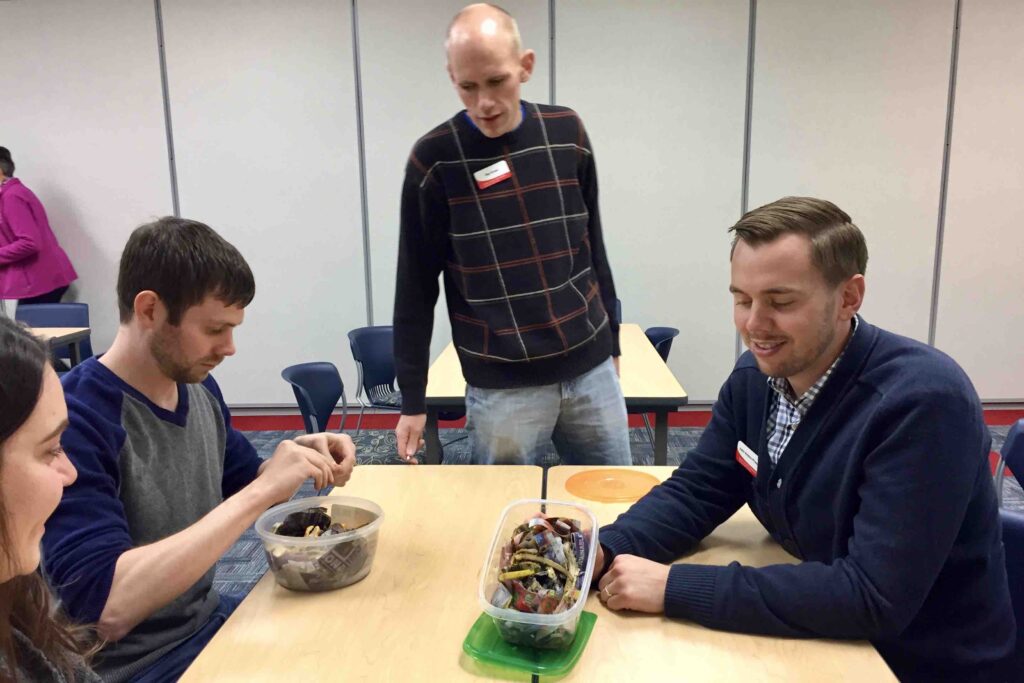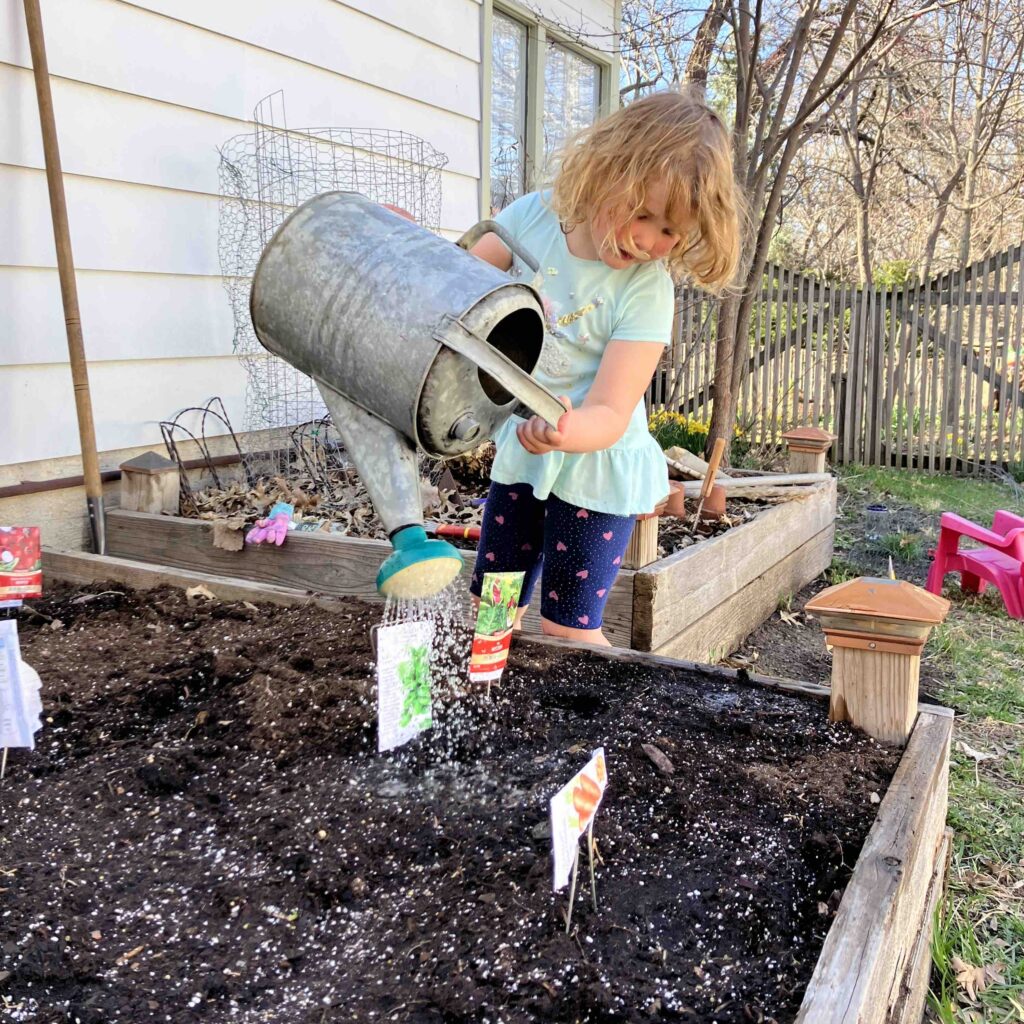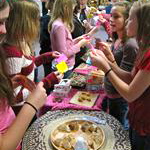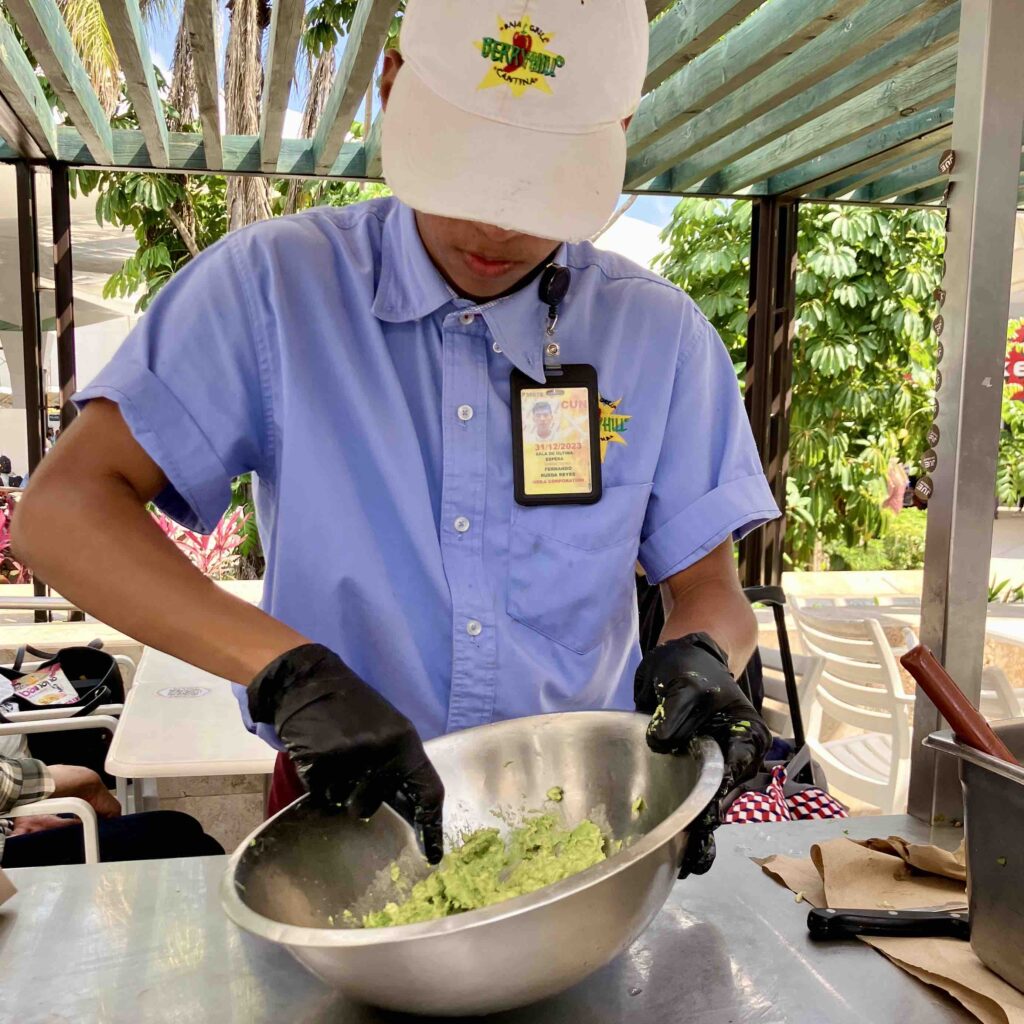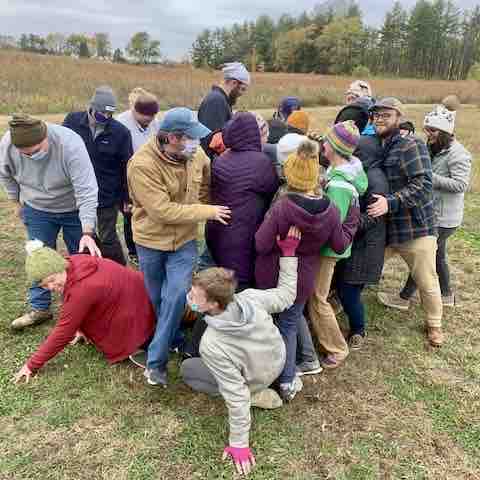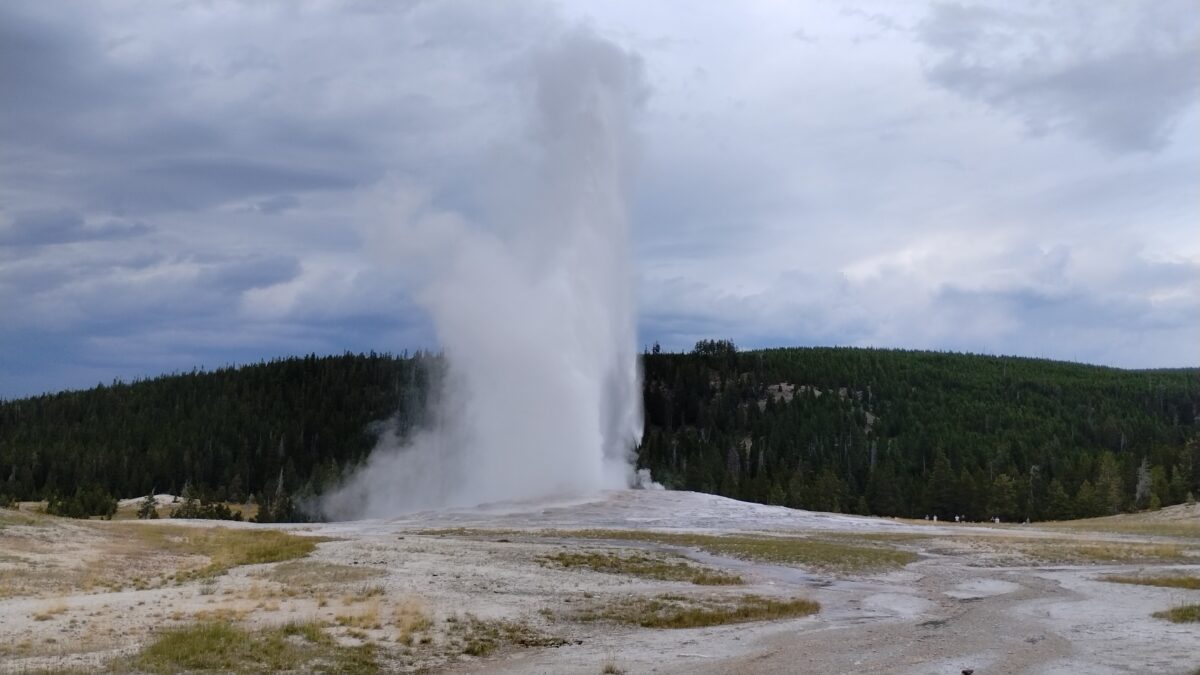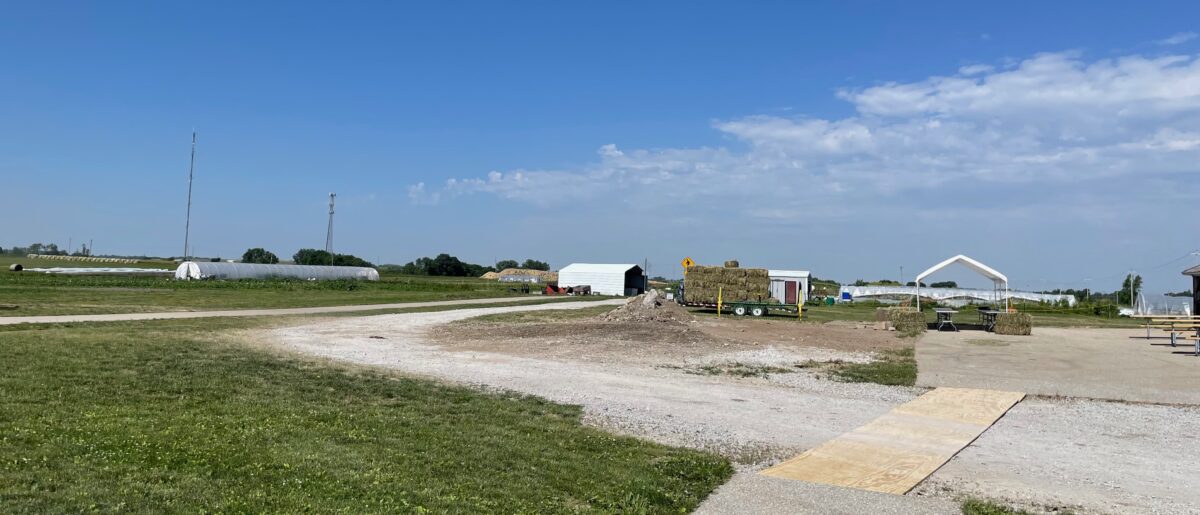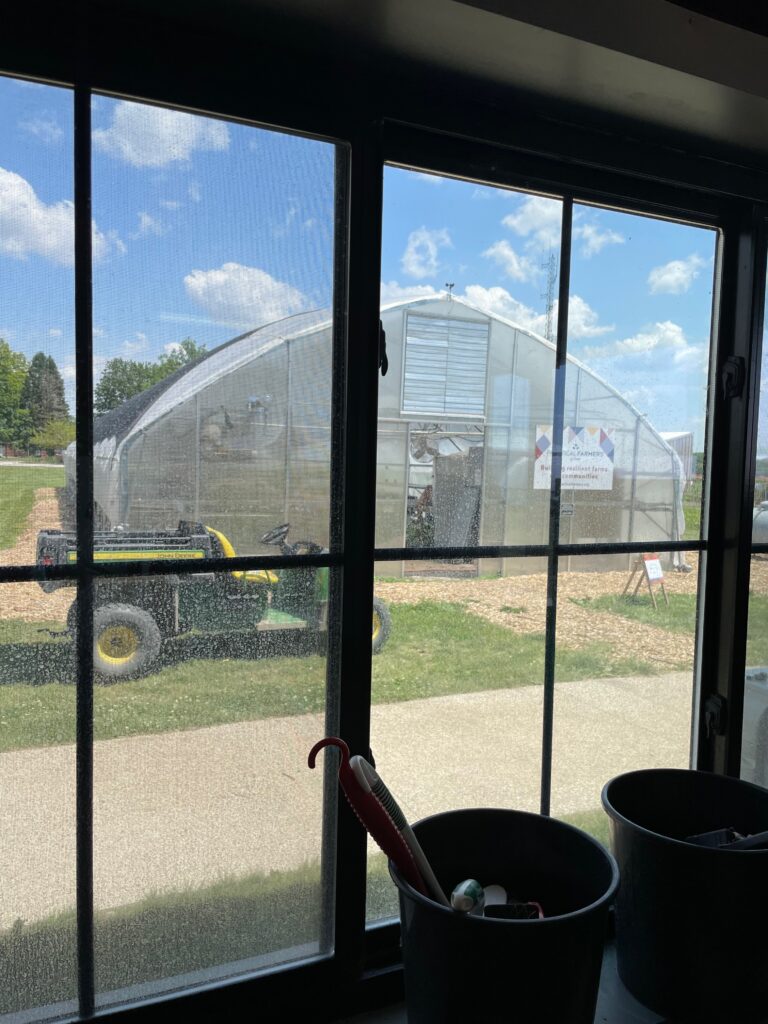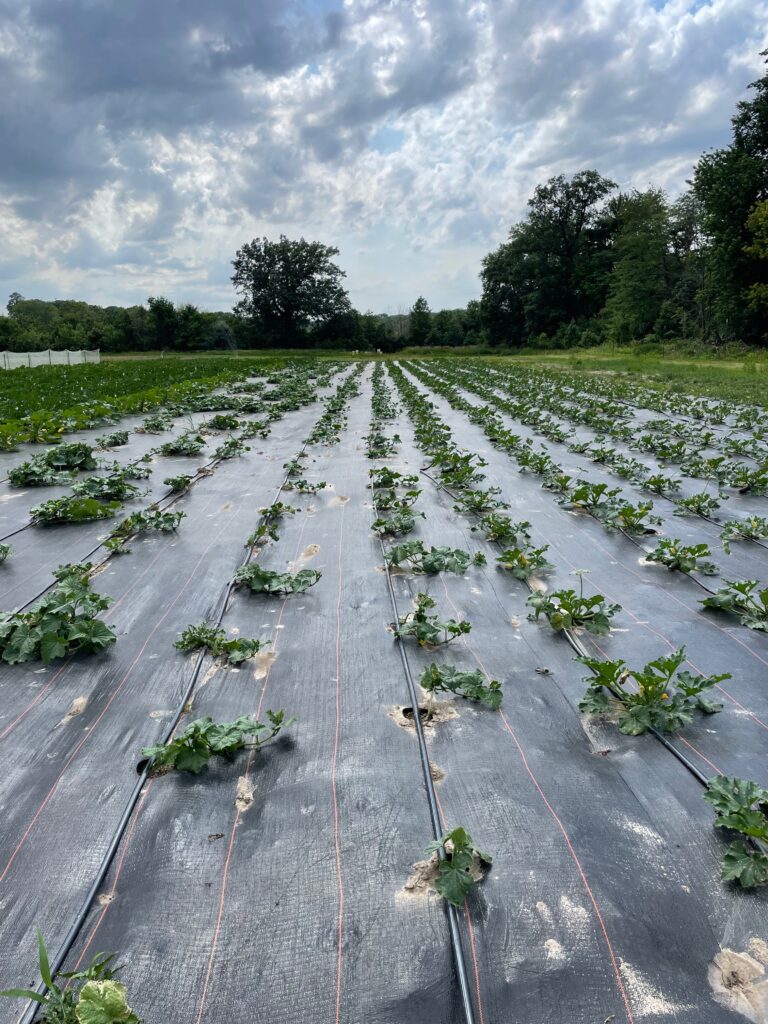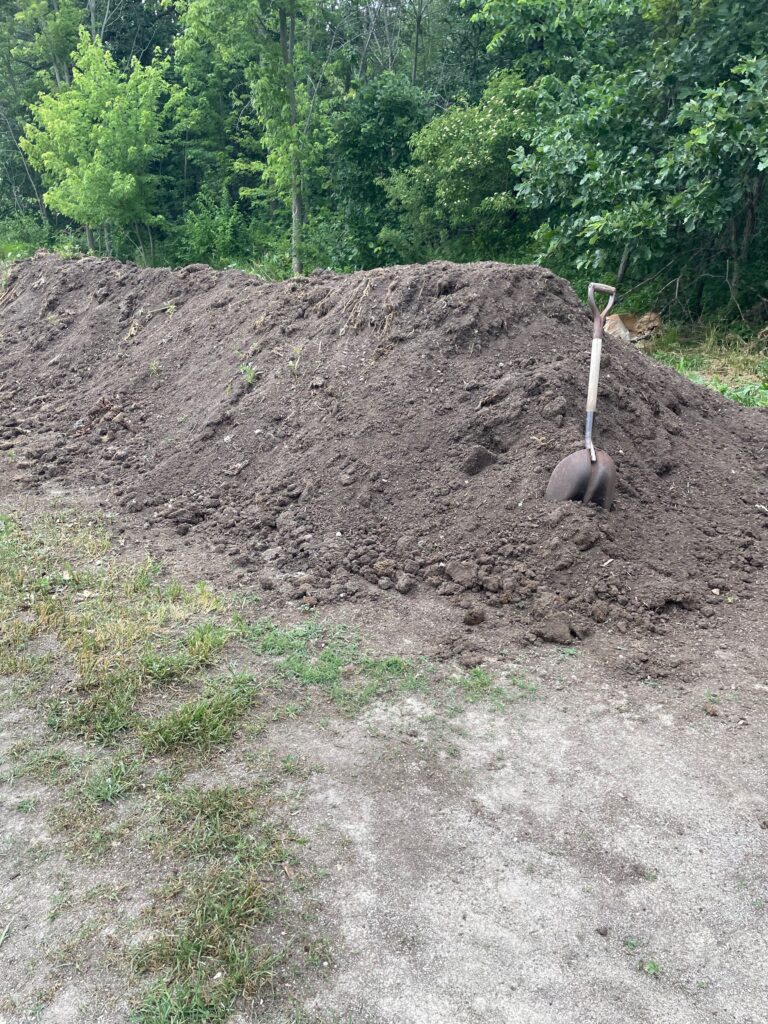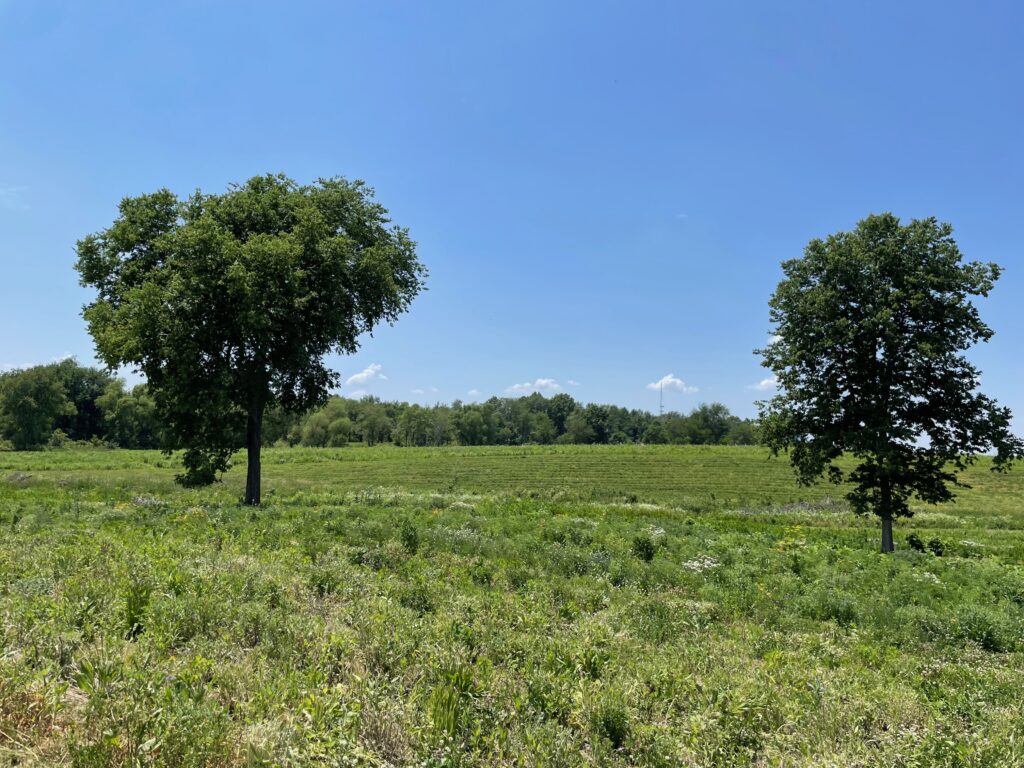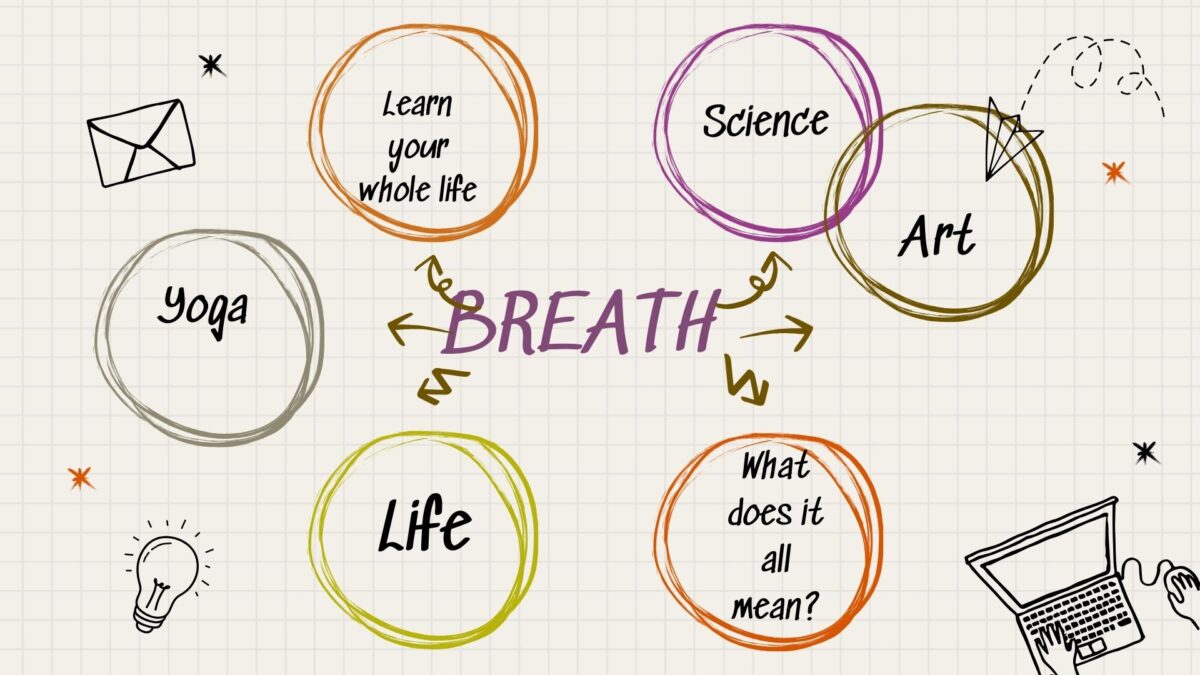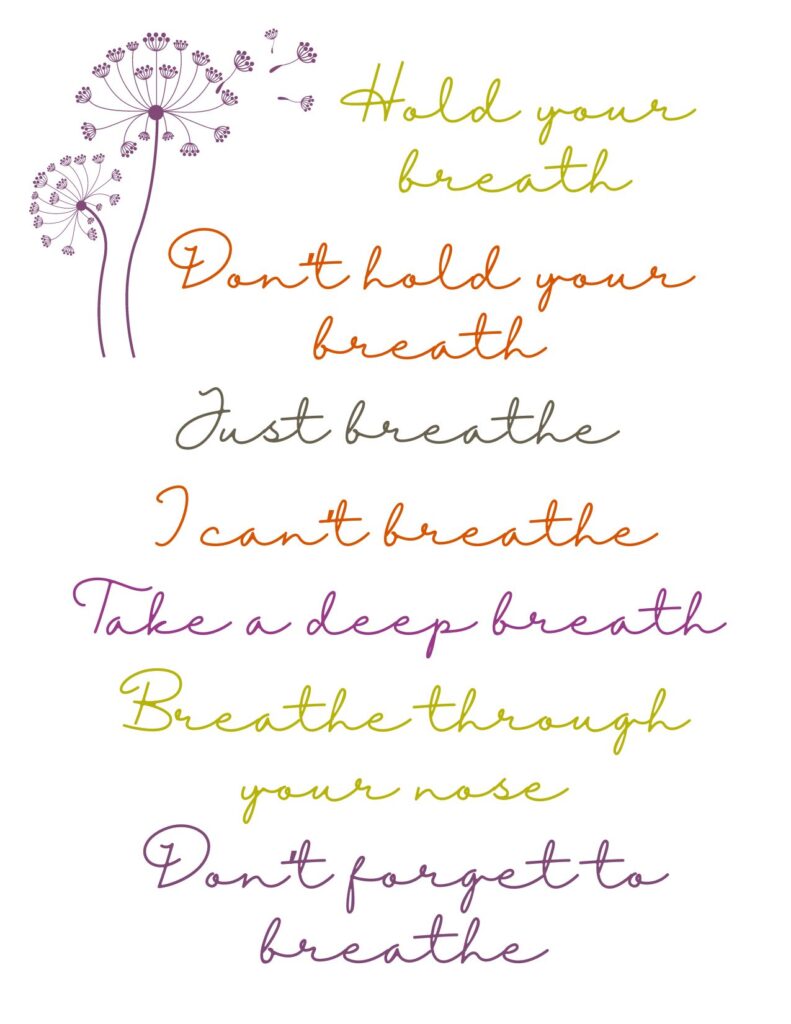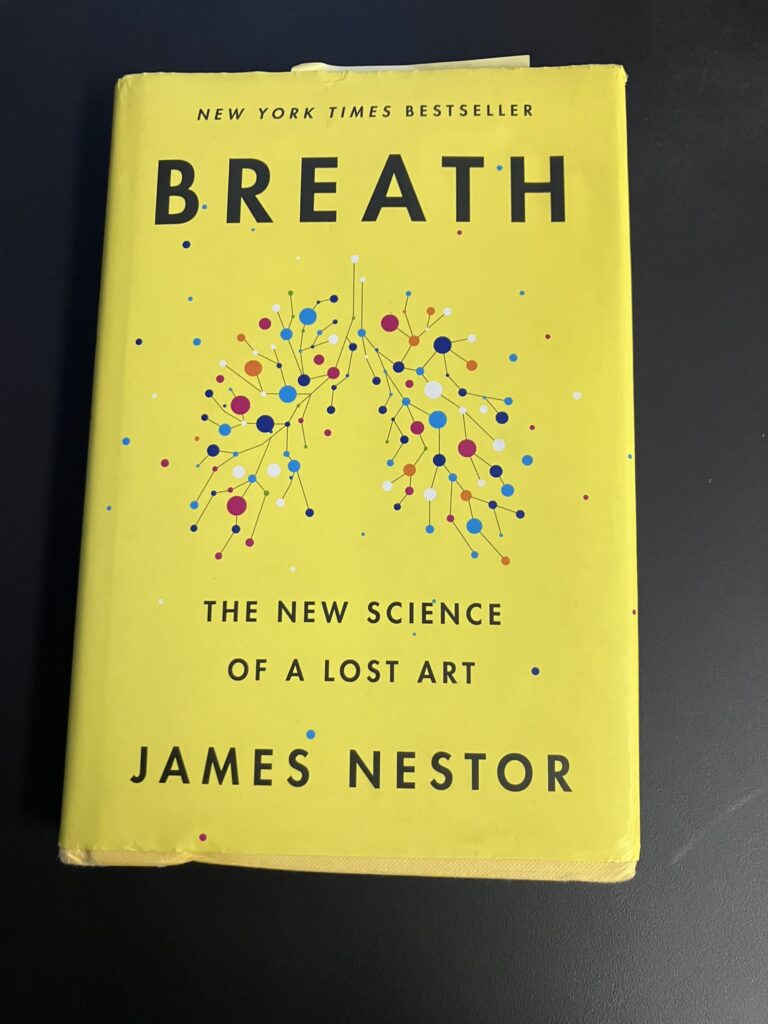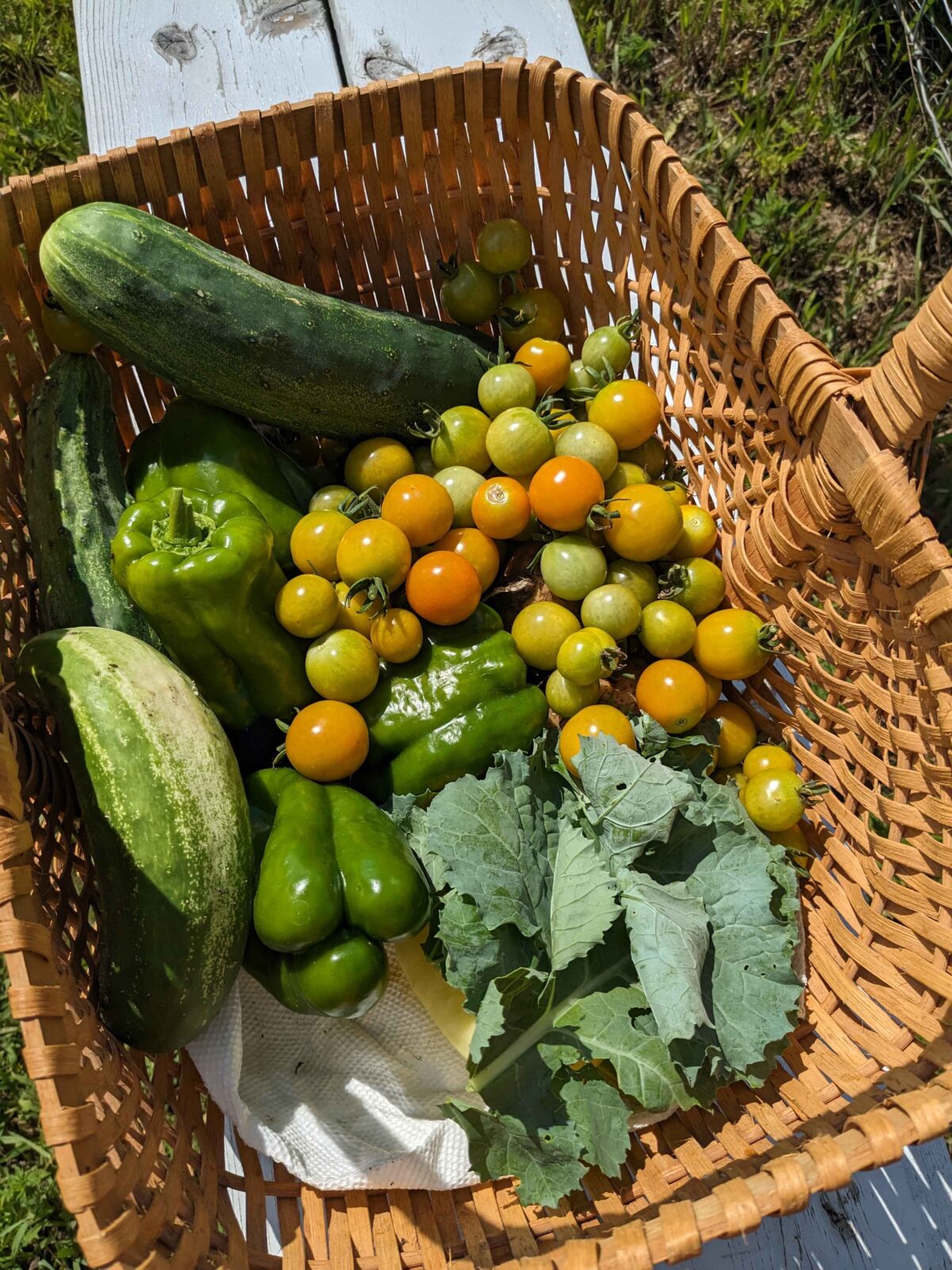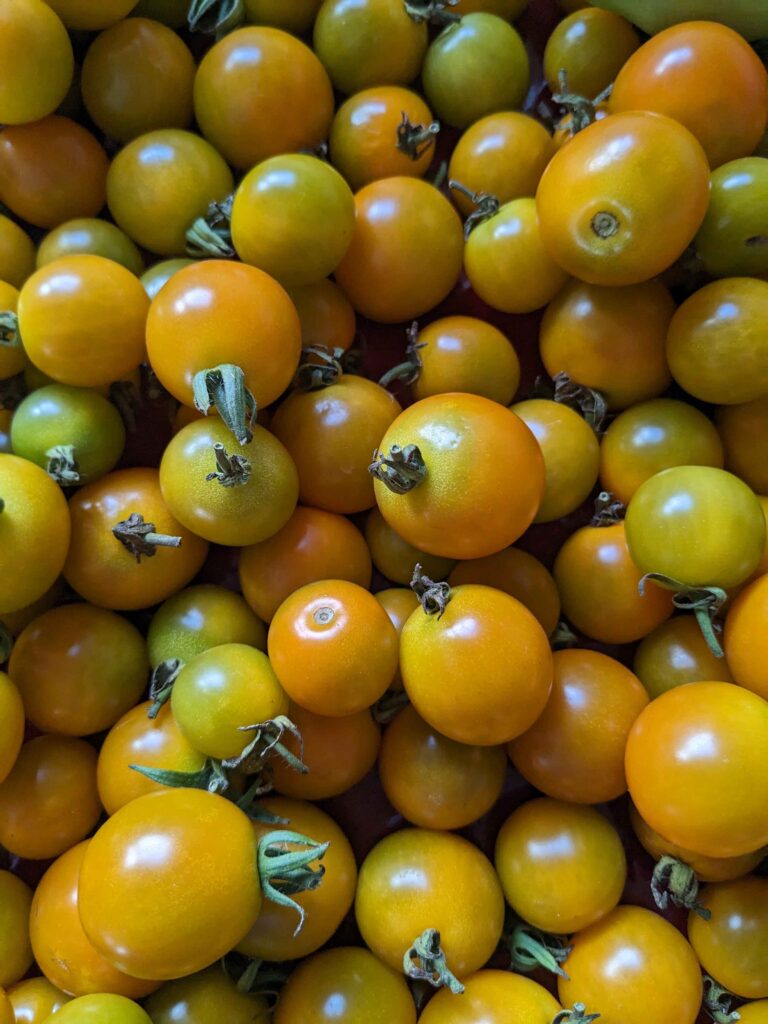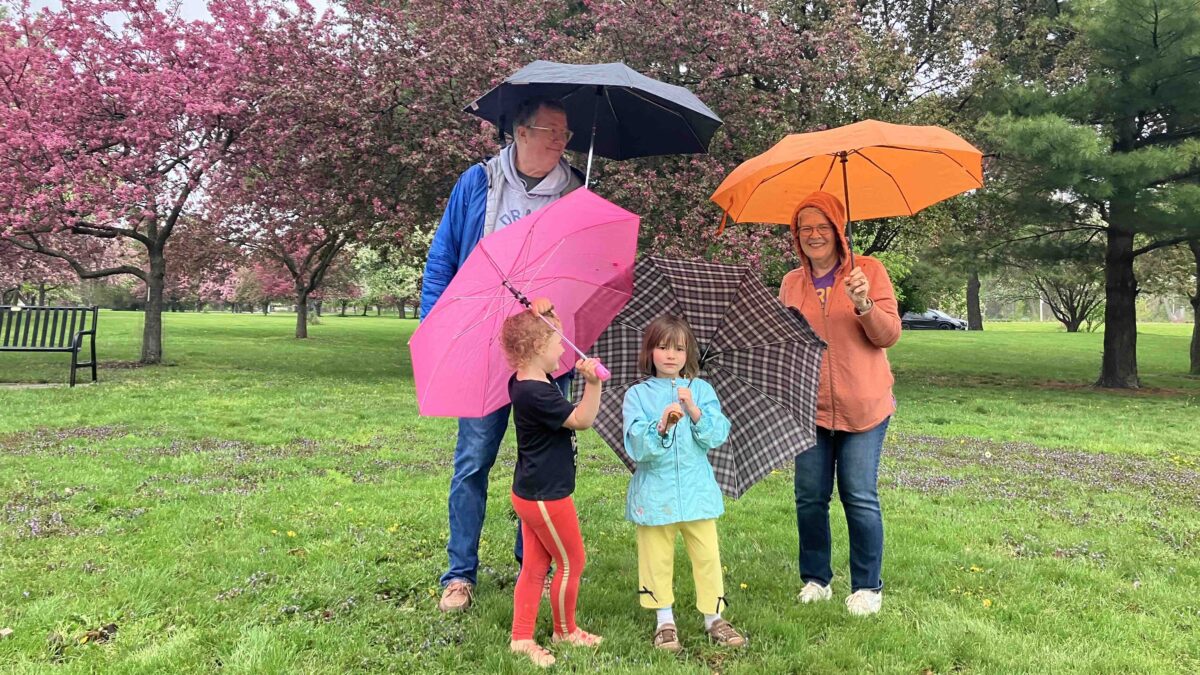Iowa Kids Garden Day
Across the state nearly 35,000 kids celebrated the first annual Iowa Kids Garden Day, hosted by 100+ locations! At Next Step Adventure, we have been organizing and coordinating this work for almost two years, and it was gratifying to see it all come together.
My favorite story was when I visited a celebration at Irving Elementary in Waterloo. A boy planted a row of bean seeds and was asked to water them using a small pail of water. The boy was quite hesitant exclaiming, “I have no experience with this! I’ve never watered anything in real life, just in games on my phone!” A minute later, he successfully poured water over the seeds.
Iowa Kids Garden Day celebrates children and educators growing and eating delicious food. This annual statewide celebration is coordinated by the Iowa Farm to School & Early Care Coalition. Join us next year on Wednesday, May 20, 2026 by visiting https://www.iowafarmtoschoolearlycare.org/iowa-kids-garden-day

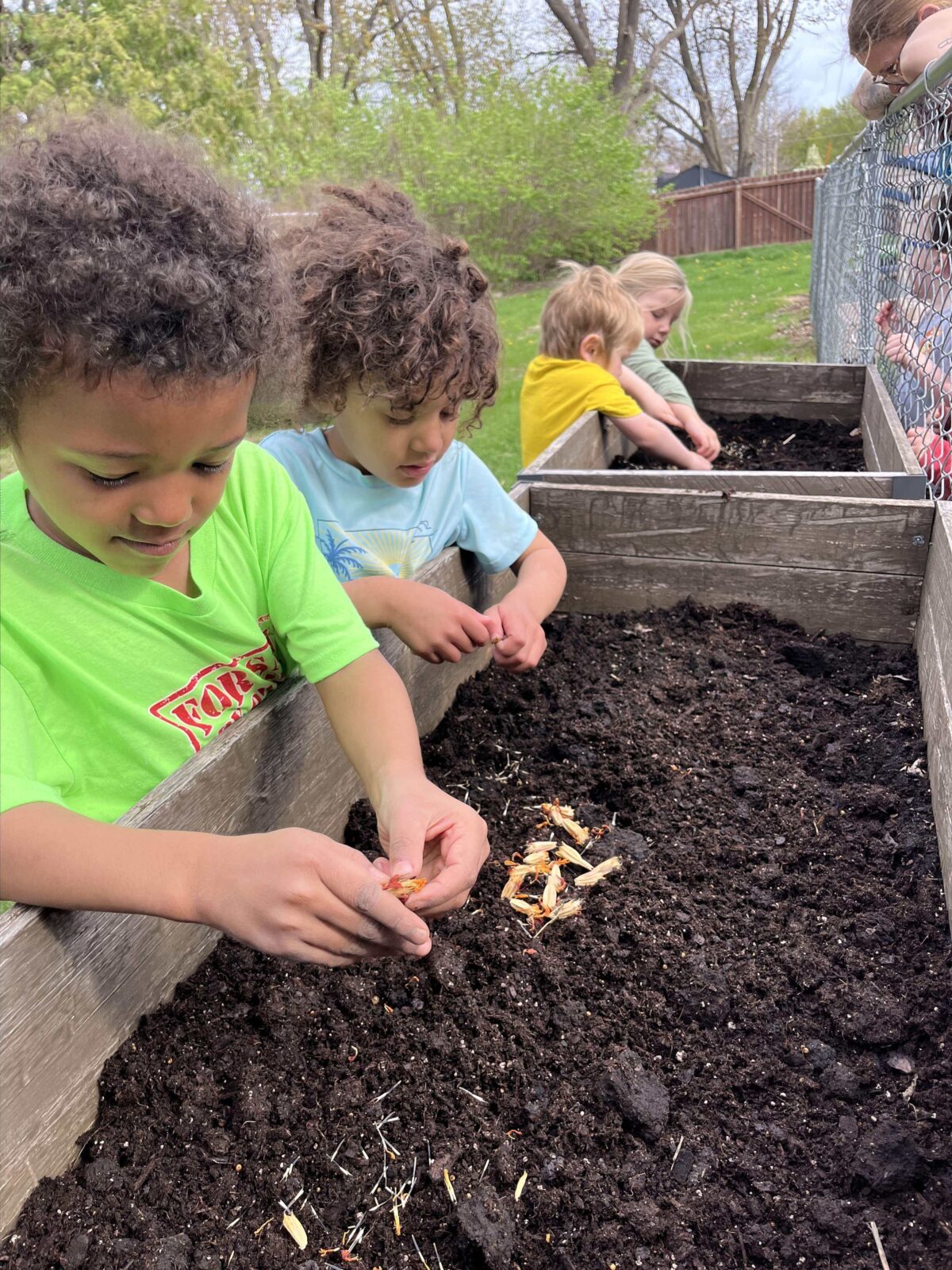
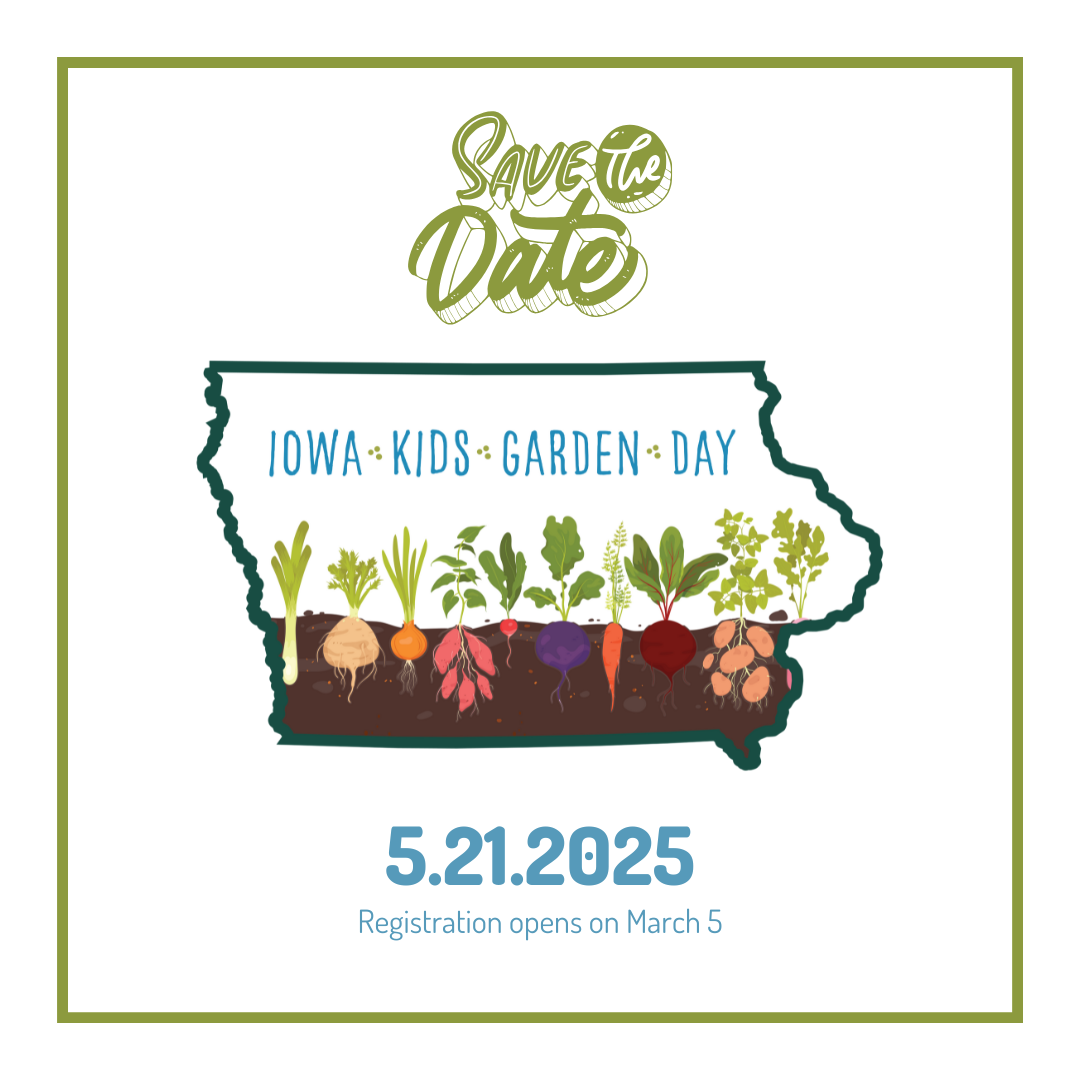
 Date: Wednesday, May 21, 2025
Date: Wednesday, May 21, 2025 Location: Schools, early care centers, and community organizations across Iowa
Location: Schools, early care centers, and community organizations across Iowa Activity: Planting or caring for a garden
Activity: Planting or caring for a garden